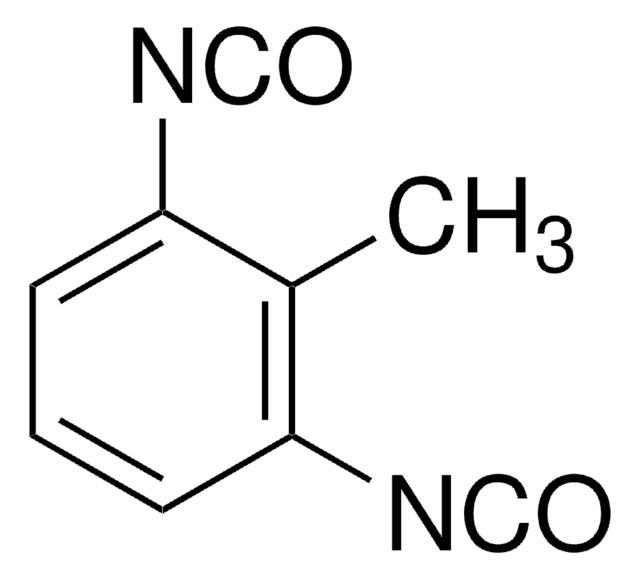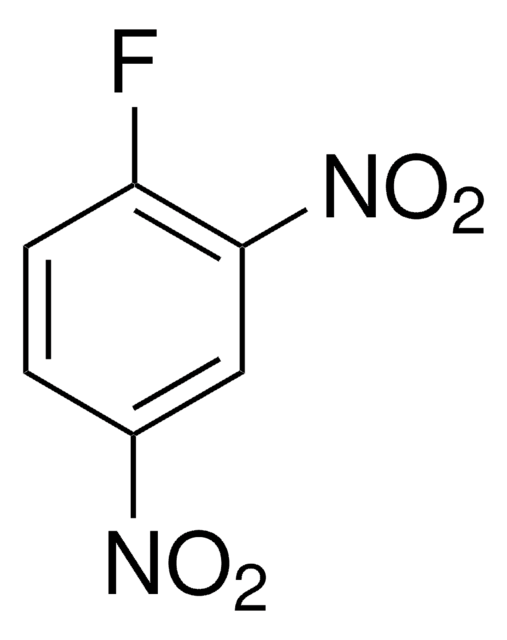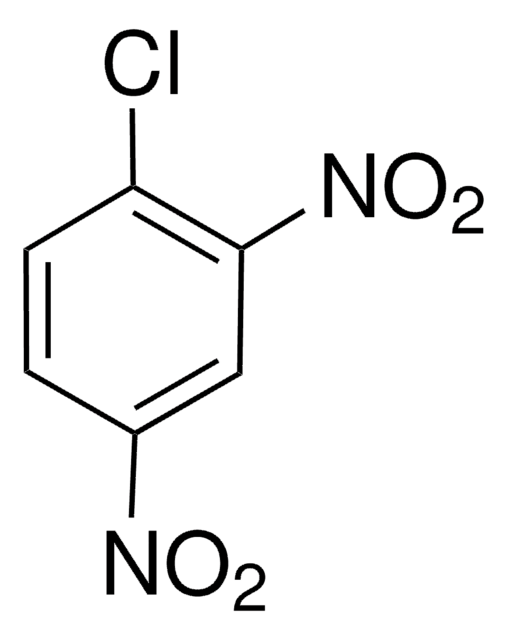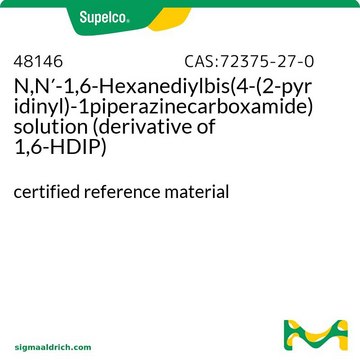推荐产品
等級
analytical standard
品質等級
自燃溫度
>1148 °F
儲存期限
limited shelf life, expiry date on the label
技術
HPLC: suitable
gas chromatography (GC): suitable
折射率
n20/D 1.571 (lit.)
bp
129-133 °C/18 mmHg (lit.)
密度
1.225 g/mL at 25 °C (lit.)
應用
cleaning products
cosmetics
environmental
food and beverages
personal care
形式
neat
儲存溫度
2-8°C
SMILES 字串
Cc1c(cccc1N=C=O)N=C=O
InChI
1S/C9H6N2O2/c1-7-8(10-5-12)3-2-4-9(7)11-6-13/h2-4H,1H3
InChI 密鑰
RUELTTOHQODFPA-UHFFFAOYSA-N
正在寻找类似产品? 访问 产品对比指南
一般說明
Find all available reference materials for compounds listed in 10/2011 here
應用
訊號詞
Danger
危險分類
Acute Tox. 2 Inhalation - Aquatic Chronic 3 - Carc. 2 - Eye Irrit. 2 - Resp. Sens. 1 - Skin Irrit. 2 - Skin Sens. 1 - STOT SE 3
標靶器官
Respiratory system
儲存類別代碼
6.1A - Combustible acute toxic Cat. 1 and 2 / very toxic hazardous materials
水污染物質分類(WGK)
WGK 2
閃點(°F)
230.0 °F - closed cup
閃點(°C)
110 °C - closed cup
個人防護裝備
Eyeshields, Faceshields, Gloves, type ABEK (EN14387) respirator filter
其他客户在看
我们的科学家团队拥有各种研究领域经验,包括生命科学、材料科学、化学合成、色谱、分析及许多其他领域.
联系技术服务部门







![1,5,7-三氮杂双环 [4.4.0] 癸烯-5-烯 98%](/deepweb/assets/sigmaaldrich/product/structures/171/446/333d560c-cff6-4958-b489-5acfb3057cce/640/333d560c-cff6-4958-b489-5acfb3057cce.png)



